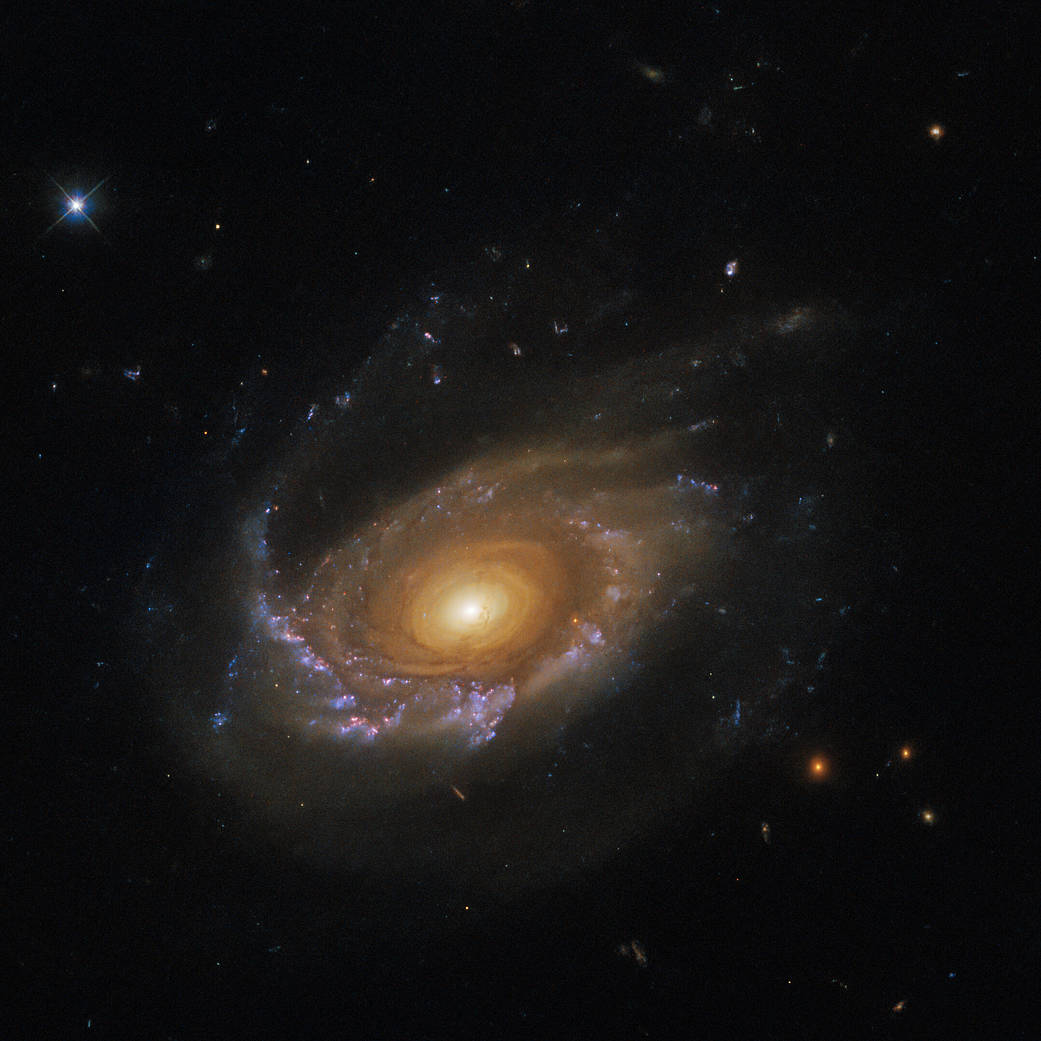哈勃太空望远镜拍摄到一个漂移的星系
The jellyfish galaxy JW39 hangs serenely in this image from the NASA/ESA Hubble Space Telescope. This galaxy lies over 900 million light-years away in the constellation Coma Berenices and is one of several jellyfish galaxies Hubble has been studying over the past two years.
Despite this jellyfish galaxy’s serene appearance, it is adrift in a ferociously hostile environment: a galaxy cluster. Compared to their more isolated counterparts, the galaxies in galaxy clusters are often distorted by the gravitational pull of larger neighbors, which can twist galaxies into a variety of shapes. If that was not enough, the space between galaxies in a cluster is also pervaded with a searingly hot plasma known as the intracluster medium. While this plasma is extremely tenuous, galaxies moving through it experience it almost like swimmers fighting against a current, and this interaction can strip galaxies of their star-forming gas.
This interaction between the intracluster medium and the galaxies is called ram-pressure stripping and is the process responsible for the trailing tendrils of this jellyfish galaxy. As JW39 moved through the cluster, the pressure of the intracluster medium stripped away gas and dust into long trailing ribbons of star formation that now stretch away from the disk of the galaxy.
Astronomers using Hubble’s Wide Field Camera 3 studied these trailing tendrils in detail, as they are a particularly extreme environment for star formation. Surprisingly, they found that star formation in the ‘tentacles’ of jellyfish galaxies was not noticeably different from star formation in the galaxy disk.
Text credit: European Space Agency (ESA)
Image credit: ESA/Hubble & NASA, M. Gullieuszik and the GASP team
这张由NASA/ESA哈勃太空望远镜拍摄的照片中,水母星系JW39静静地悬挂着。这个星系位于9亿光年之外得后发座,是哈勃过去两年研究的几个水母星系之一。
尽管这个水母星系有着平静的外表,但它却漂浮在一个极其恶劣的环境中:一个星系团。与相对孤立的星系相比,星系团中的星系经常被更大的邻近星系的引力扭曲,这种引力可以将星系扭曲成各种各样的形状。如果这还不够的话,星系团中星系之间的空间还充斥着被称为星系团内介质的灼热等离子体。虽然这种等离子体非常稀薄,但穿过它的星系几乎就像游泳者与水流搏斗一样,这种相互作用会剥夺星系形成恒星的气体。
星团内介质和星系之间的这种相互作用被称为冲压压力剥离,这是造成这个水母星系尾部卷须的过程。当JW39在星团中移动时,星团内介质的压力将气体和尘埃剥离,形成长长的恒星形成带,这些恒星形成带现在从星系盘向外延伸。
天文学家使用哈勃的广角相机3详细研究了这些尾部触须,因为它们是恒星形成的特别极端的环境。令人惊讶的是,他们发现水母星系“触须”中的恒星形成与星系盘中的恒星形成并没有明显的不同。
文稿来源:European Space Agency (ESA)
影像来源:ESA/Hubble & NASA, M. Gullieuszik and the GASP team

